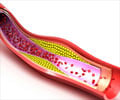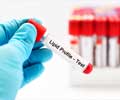Families who live long and healthy lives probably have significantly larger high-density lipoprotein (HDL) and low-density lipoprotein (LDL)
Families who live long and healthy lives probably have significantly larger high-density lipoprotein (HDL) and low-density lipoprotein (LDL) particles, according to a new study. Lipoproteins are the particles that carry fat through the blood.
Previous studies suggest genetic determinants are highly heritable. This study's goal was to identify the specific biological or genetic factors that determine long life in individuals. They recruited more than 200 people over age 98 and their children. They found these families have significantly larger HDL and LDL particle sizes. The sizes of the particles were not dependent on the levels of lipoproteins in the blood.In addition to living longer, these people have generally been spared from age-related diseases such as cardiovascular disease, diabetes, Alzheimer's disease and cancer. Researchers say their study cannot directly conclude larger particle sizes play a direct biological role in successful aging, but they do suggest that lipoprotein concentrations and particle sizes are excellent causal biological candidates. For example, HDL and LDL particle sizes are significantly larger in women than in men and may explain, in part, why women have lower cardiovascular disease incidence rates and higher life expectancies than men.
In looking at the offspring of long-living individuals, the researchers found LDL and HDL particle sizes are significant predictors of having longevity, even after taking into account absolute level of lipids, lipoproteins and body mass index. They also say LDL particle size may be a stronger predictor of cardiovascular disease than LDL levels.
The researchers conclude that although further research is needed, these findings may provide key insights into preventative and therapeutic interventions of several age-related diseases that cause significant mortality in the elderly.











